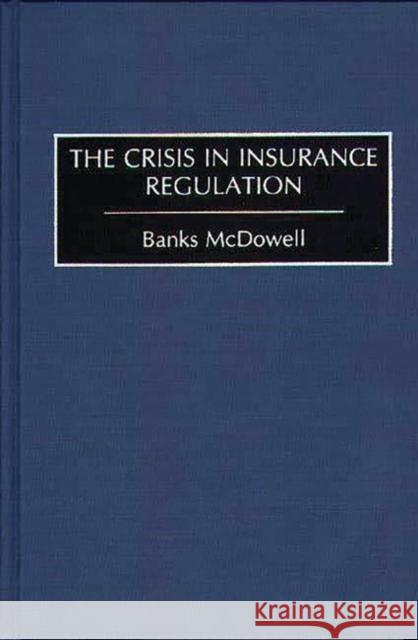The Crisis in Insurance Regulation » książka
The Crisis in Insurance Regulation
ISBN-13: 9780899308531 / Angielski / Twarda / 1994 / 192 str.
Private and governmental insurance systems in the United States have been suffering an ongoing series of crises. Automobile liability insurance, malpractice protection, health insurance, pension plans, and property insurance have been troubled in recent times by such matters as the threat of insolvency, extremely high premiums, lack of availability for many applicants, and discriminatory selling practices. For over a century, private insurance has been heavily regulated. Governmental insurance, particularly social programs such as Social Security and Medicare, also face serious funding and availability problems. These ongoing problems suggest that regulators have not been doing a very effective job. Unhappy consumers are making different demands both on the industry and on regulators. Some call for deregulation in the belief that market forces will make insurance more efficient, available, and affordable. Others insist that governmental regulators, whether legislators, insurance commissioners, or judges, step in and help solve these problems. Regulators, very much a part of the political process, have avoided these controversial areas of difficult choices. Avoidance is no longer an option for regulators.
McDowell explores what competing types of regulation, whether market, industrial, or governmental, might be used, what goals regulators are committed to, the different regulatory philosophies of federal and state agencies, whether the problems are caused by under-regulation or over-regulation, and difficulties of enforcement. He discusses in detail these regulatory problems in the fields of automobile liability insurance, health insurance, and the demand of other financial service institutions to compete in the insurance business. Throughout the book, he compares what American regulators are doing with the practices in Canada in order to illuminate problems and possible solutions for American regulators to consider. Finally, he closes with an analysis of whether the emerging trends of internationalization and interdependence of personal and economic spheres, the increase in magnitude of risks, and the increased speed of transactions will require changes in insurance regulation. Insurance regulators and professionals in governmental and private insurance as well as scholars and students of insurance law will be interested in this book. Even consumers who are concerned or angry about the future of their insurance protection will find it valuable.











